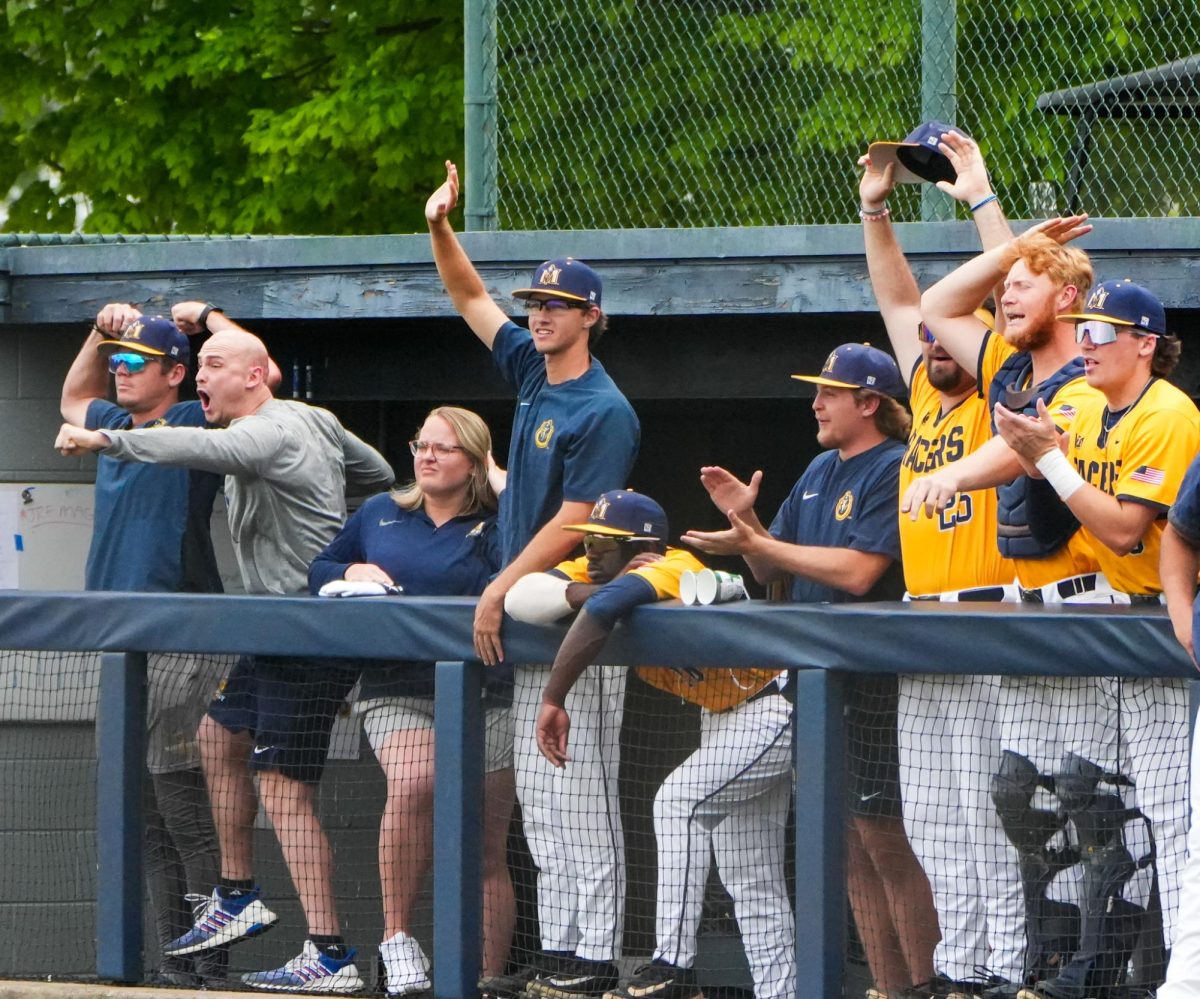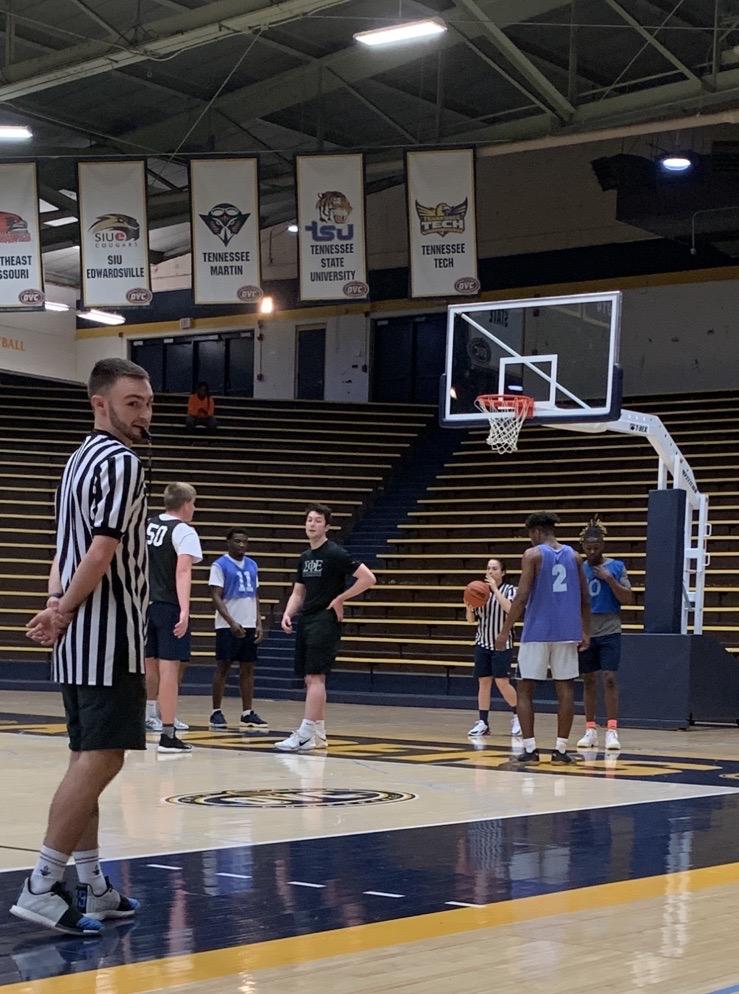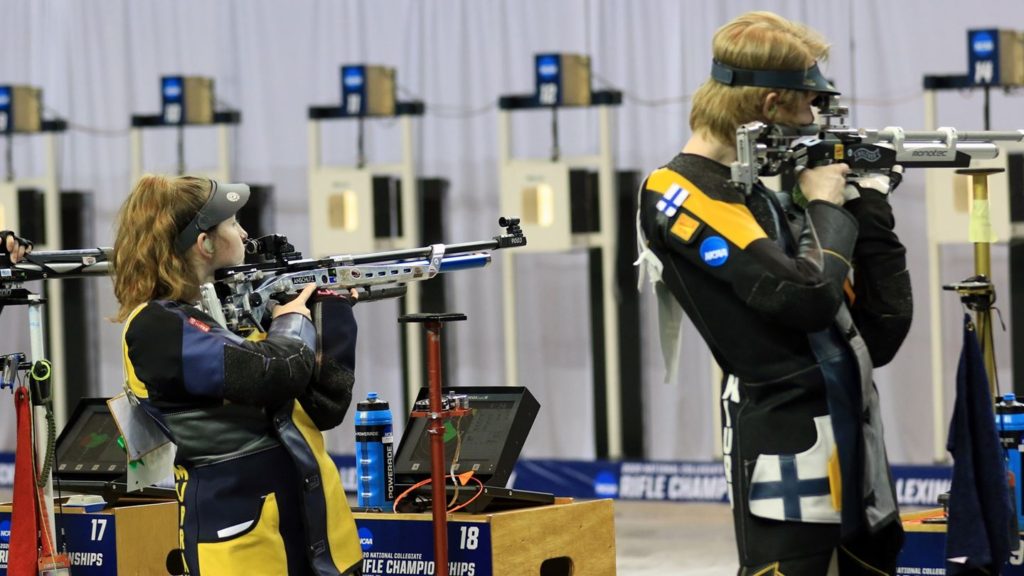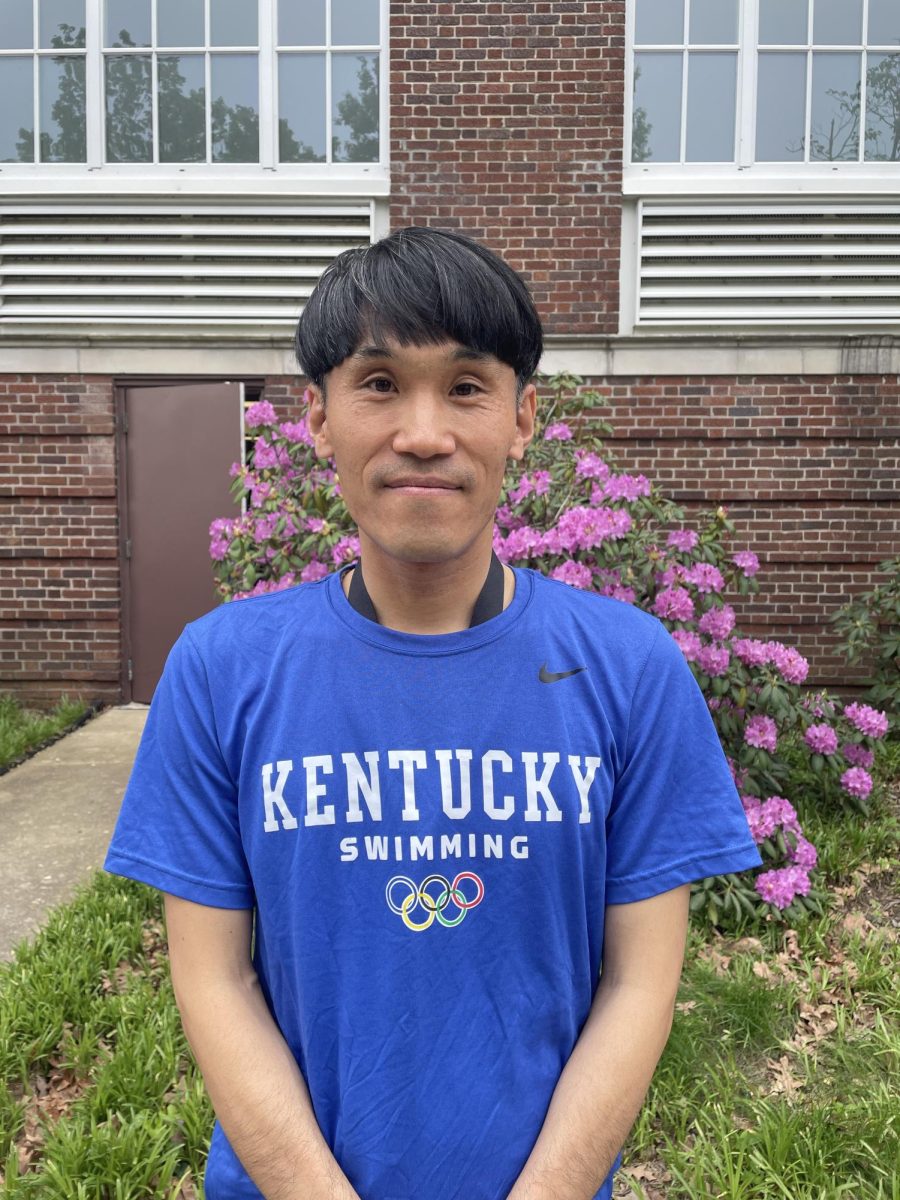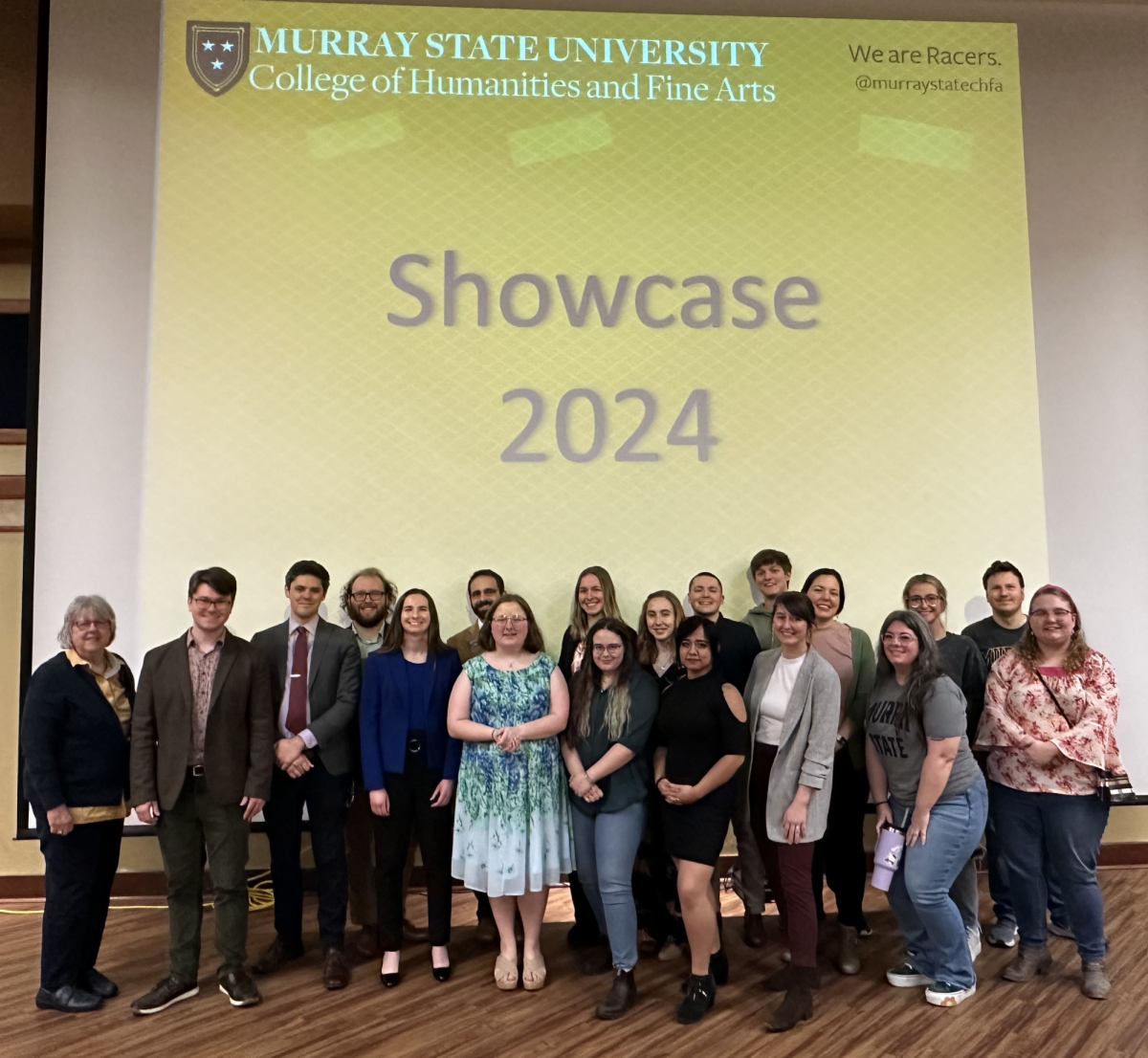How does Murray State show prospective students what it has to offer? How does it give incoming freshmen a frame of reference for what the next few years have in store?
On Saturday, Feb. 3, the College of Humanities and Fine Arts showcased their diverse array of academic departments to the Admitted Student Kickoff crowd. Unlike previous years, this showcase featured student presentations. Art and design, English and philosophy, global languages and theatre arts, history, music, political science and sociology and psychology each chose students to represent their departments.
These students were approached during the fall 2023 semester and planned their section of the showcase with mentorship from CHFA faculty members. A rehearsal on Friday, Feb. 2 gave the students a final test run to refine their presentations.
Tana Field-Bartholomew, host of the showcase, said, “The showcase has been a means of highlighting college excellence [and] inspiring and connecting attendees while providing insight into various topics and processes.”
Senior studio art major Beth Bailey and sophomore graphic design major Isa Bolanos discussed activities and extracurriculars the art and design department has to offer for its students. Their slideshow featured pictures from their trip to Columbia College Chicago, art classes, Clara Eagle exhibitions and Photography Club events. As Photography Club president and vice president, Bailey and Bolanos have had the opportunity to set up photo booths and visit the Land Between the Lakes. The feedback from professors, conference professionals and the student community in the art and design department provide plenty of opportunity for growth and experience.
“The Murray State art department is an amazing program. It has so many hands-on experiences for you, with many different mediums,” Bolanos said. “It has positive environments, new friends, and so many skills and job opportunities to share and have for your future.”
Seniors Ava Chuppe, an English literature major, and Matthew Callahan, an English education major, presented a powerpoint over what they and others have done in the English and philosophy department. Chuppe said a big perk of being an English major is getting to see the bigger picture of society and humanity. They also shared overviews of their honors theses, which allow them to conduct in-depth research over topics of interest. Department organizations like the English Student Organization provide students with community activities and leadership opportunities. Though Chuppe and Callahan both plan to pursue a teaching career, they reminded the attendees that an English degree is associated with valued skills for any field, like effective written and verbal communication and literacy when reading complex texts.
To show how Humanities and Fine Arts students can discover and explore passions within their field, senior Spanish translation and interpretation major Erin Fairweather summarized her ongoing translation project of Pedro Mexía, a Renaissance writer and official chronicler of Charles V of Spain. Fairweather said she initially dreaded her scholarship’s required weekly five hours of research, but with the help of her mentor Dr. Fritz, she’s now passionate about the research she conducts.
Through her transcription internship with Mexía Online Archive, Fairweather found discrepancies between Mexía’s original Spanish texts and the various translations. Fairweather proposes that, through omission, the translators of Mexía’s work broke a cardinal rule by changing his texts to better suit ideologies of non-Spaniard readers. She visited the Newberry Library in Chicago, Illinois, to test her theories and found that an English translation of Mexía’s “Silva de varia lección” removed over 60% of the original text.
Similarly, senior history major Quinn Litchfield shared about his research pursuits as a CHFA student. The history department allows its students to explore a broad range of topics; a prime example of this creative freedom is a paper he wrote on the history of microwave ovens, a topic he was asked to present about many times.
Litchfield’s presentation included his more recent research into the British Museum’s ownership of Greek Parthenon statues. Last spring, he went on a study abroad trip to London and visited the museum to ask questions about the controversial exhibit. A Scottish nobleman named Lord Elgin removed the statues in an attempt to preserve them, but Litchfield’s research leads him to believe that Elgin was motivated by prestige and money. His sale of the statues to the British Museum, the lack of care with which they were handled before being exhibited and the Museum’s refusal to return them to Greece all contribute to Litchfield’s ongoing study.
“I really hope that the [attendees] took away how flexible the history department is and how much room there is for creative expression,” Litchfield said. “Having the opportunities to research on anything I find interesting has been a blast, whether it’s microwave ovens or just being angry about the British Museum.”
Amelia Lutz, sophomore music performance major and flutist, presented the many opportunities offered by her department. Murray State has a variety of bands and choirs, and not all of them are reserved for music majors. These groups foster friendship and community, give leadership opportunities and allow students to be a part of something bigger than themselves. Because of her involvement in the music department, Lutz has been able to perform with the Wind Ensemble at Owensboro’s RiverPark Center and serve as a Racer Band section leader. She and other music majors put a lot of hard work into their craft and get great experiences and memories in return.
“Working on this showcase has been a revitalizing experience. Looking back over my past two years at Murray, seeing the many amazing opportunities given to me in choirs, bands and the Honors College [has] made me appreciate the music department even more,” Lutz said. “I got to go down memory lane when I chose pictures to include in my presentation; each slide brought back good memories.”
Senior political science majors Audrey Stallings and Wes Banks gave a dynamic and humorous presentation about their department. They said the political science and sociology department gives its students the tools to understand and change the world around them. The classes they have taken have allowed them to learn about topics from labor laws to social movements. Of the department’s student organizations, Stallings and Banks are most involved in Model UN, which connects students from across the country in conferences to simulate United Nations meetings and propose solutions to real world problems. Banks said that, as a nontraditional student, being a member of Model UN gave him a reason to be on campus more often and make more friends. A political science or sociology major opens a lot of doors outside of governmental jobs. Stallings, for example, will attend law school next semester.
To end the showcase, a simulated experiment was performed by Social Psychology Club members Emily Kinsey, first-year clinical psychology graduate student; Jordan Pearsall, first-year general experimental psychology graduate student; Kyler Webster, junior psychology major; and Chloe Whitfield, senior psychology major. The scripted experiment was based on one they are currently working on, a modern take on Stanley Milgram’s 1961 experiment. Milgram found that two-thirds of study participants would administer harmful electric shocks to other people if prompted by an authority figure, even if it conflicted with their conscience. These shocks were notably fake, though the participants did not know this. The Social Psychology Club redid this experiment through the lens of cyberbullying.
The script had an element of levity and humor, as all members but one were aware of the study. When the question-asker received incorrect answers, he was prompted to give increasingly negative feedback to the responder. The study aimed to answer why this participant continued to cause emotional harm instead of rejecting the proctor’s demands.
“While our presentation was intended to be comedic in nature, I do hope that prospective students watching might have had their curiosity piqued about psychology,” Whitfield said. “I’ve learned so much from [the psychology professors] since coming here, and their support and encouragement in my academic interests are a big part of why I now want to pursue my master’s in general experimental psychology here at Murray State.”
When planning their presentation, the students believed this skit would better represent how fun psychology can be than a powerpoint would. Whitfield said that psychology is often thought of as only counseling and diagnoses, but the field involves far more research and activity than that. Making a skit with a balance of humor and shocking results allowed them to entertain their audience and spark interest for prospective psychology students.
“Working on the CHFA showcase has been one of the best experiences of my college career. Getting to come together with classmates who share a common passion for psychology and further developing the works of one of the biggest names in the discipline has truly been an honor,” Kinsey said.
This year’s decision to have student voices at the forefront of the CHFA showcase brought a hard hitting, personal quality to the presentations. The experiences students shared goes a long way to show that Murray State offers all its students the opportunity to pursue what they are most passionate about.
“I left the event inspired by the ongoing research and excited about the wide range of opportunities available to students within our college,” Field-Bartholemew said. “It is my belief that attendees of the event had a similar experience.”

















